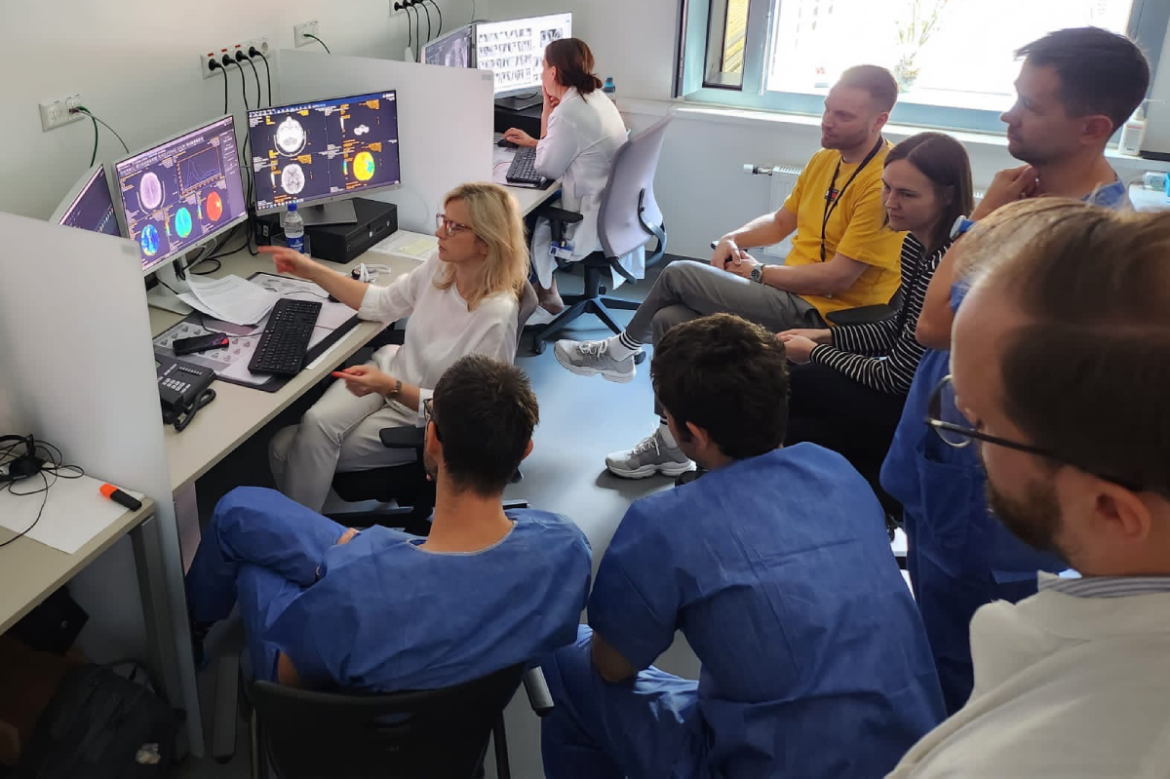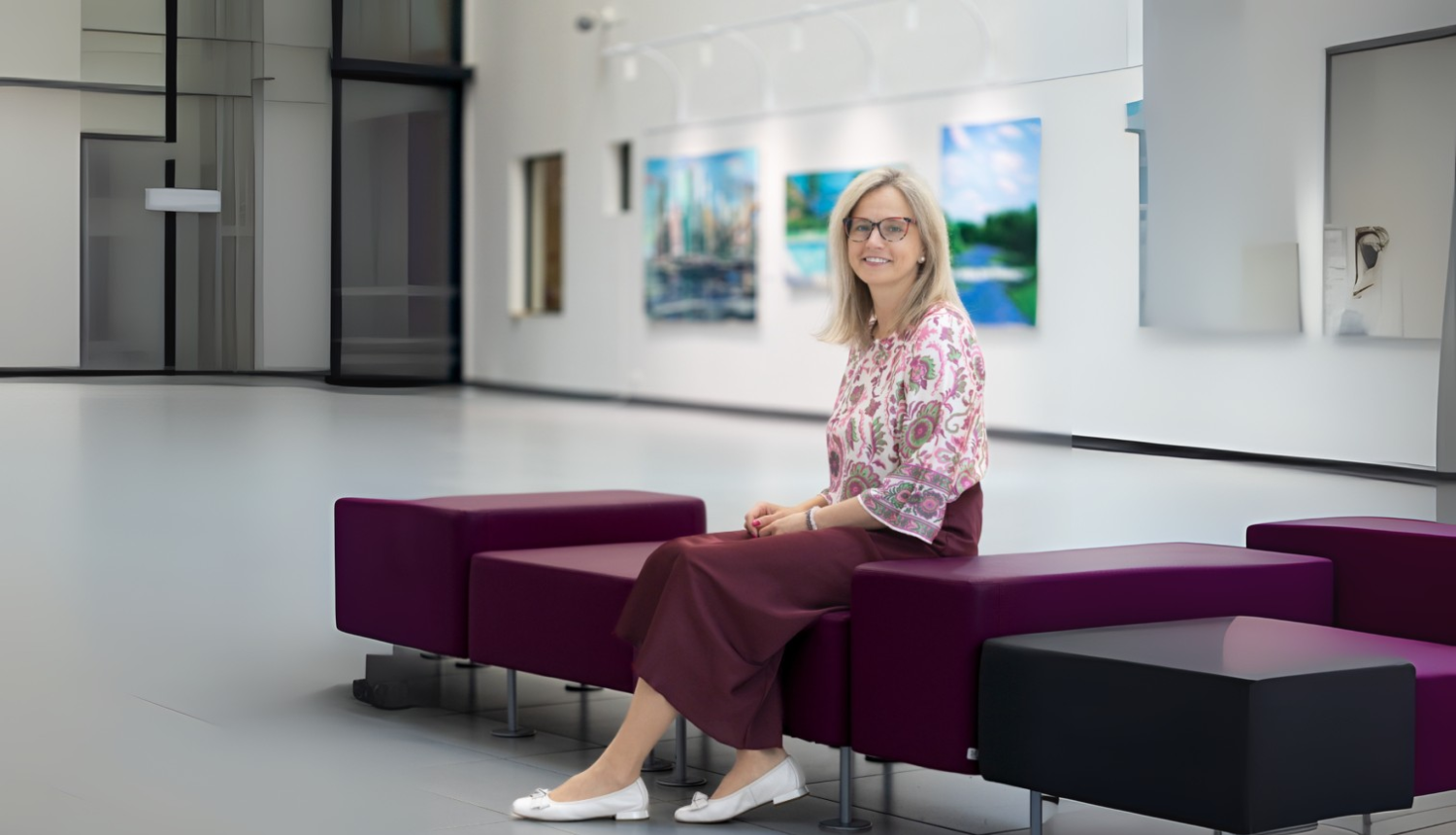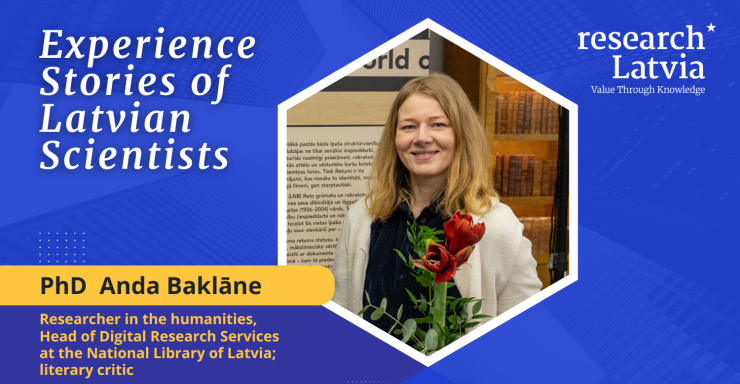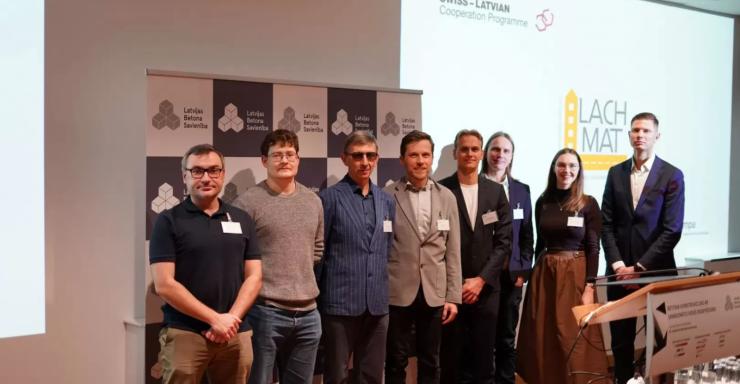The Public Relations Department of Riga Stradiņš University continues its series of articles about RSU tenured professors. This time, the interview focuses on M. Radziņa’s journey and passion for medicine and science.
“Technologies have become closely intertwined in a natural symbiosis to fulfil the overarching goal – achieving a personalised approach in medicine, and we view each person as an individual with their unique characteristics. The combination of technologies allows us to address situations at an individual level: artificial intelligence (AI) solutions enable us to process much larger amounts of data, surpassing human capacity – both in terms of work hours and the physiological capabilities of the brain,” says Maija Radziņa, tenured professor at the Department of Radiology at Riga Stradiņš University, in a conversation about the potential of AI in medicine and her research using AI solutions in cancer and stroke diagnostics.

When talking to doctors or other specialists about the use of AI in healthcare, radiology is often jokingly mentioned as the first speciality that could almost disappear due to AI. However, the focus of your research is on how to use AI in radiology more effectively - not to escape AI, but to work alongside it.
To answer this question, it is helpful to examine history. In the 1970s, radiology was precisely the medical field where the then-available medical technologies—X-rays—closely merged with computing technologies. This combination led to the creation of computed tomography (CT). At that time, X-ray specialists also received a new title - radiologists.
Our field has always kept pace with technological advancements. This is a normal progression, so the claim that radiologists will be the first to be replaced by AI is, in my view, a misinterpretation of the facts.
We have had the most incredible experience - over 50 years! - in introducing and integrating computer-assisted technologies into medicine. At some point, computer-assisted diagnostics was renamed AI, which has now gained broader recognition.
How did you come to radiology, considering your background in both medicine and law?
I decided in 10th grade that I would study medicine, and I actively prepared for it - studying chemistry and doing everything necessary to succeed. However, during my third year of medical school in the 1990s, I experienced some discouragement and a loss of motivation. At the time, funding in the field was limited, and we were strongly encouraged to pursue family medicine (a new speciality then), but I didn't feel called to that path.
Together with like-minded peers, I enrolled in a law program and completed my education in parallel. During years 4–6 of medical school, I completed years 2–3 of law, and even during my radiology residency, I continued my law studies, earning a master's degree.
Sometimes, exam sessions meant taking a medical exam in the morning and a law exam in the evening- something only youth can survive! (laughs) I have never paused my education. During my PhD, I had two children, but I did not count the years of parenthood as breaks. I have never regretted studying both medicine and law- it has given me a broad understanding of various fields, regulatory processes, and more. It has helped me succeed in public organisations and other institutions. I have always been on the side of doctors- even if I had stayed in law, I would likely have chosen to practice law for healthcare professionals. I have also helped advocate for the rights of medical residents and young colleagues.
Why did you choose radiology?
We had excellent lecturers. I applied to both radiology and surgery, and ultimately chose the former. Radiology seemed very interesting, and at that time in Latvia, it was rapidly developing - CT and MRI were becoming foundational in radiology. I am grateful to my teachers, including Aija Teibe, Ausma Ozoliņa, Elizabete Kadakovska, Tatjana Ozola, Professor Gaida Krūmiņa, and Professor Ardis Platkājis, for inspiring me. Each inspired me in different ways. I also have fantastic colleagues - some have taught me excellent practical skills, others have inspired scientific ambitions. These people have been sources of inspiration on my path.
Currently, I focus on abdominal vascular and oncological radiology, as well as imaging of the vascular, nervous system, and musculoskeletal systems.
How did you start your research alongside clinical work?
My first small research project was before my PhD, around 2004 (I began my PhD in 2010 and completed it in 2014). I was inspired by colleagues who said before a European-level congress, "We cannot just attend; we need to submit a research summary."
This first scientific experience sparked my curiosity.
My next major inspiration was a fellowship at Massachusetts General Hospital in Boston in 2007. There, I studied emergency radiology topics, including brain perfusion imaging in patients with acute ischemic stroke. Soon after, we began performing these examinations at our hospital (Paula Stradiņš Clinical University Hospital). These were experimental procedures at the time. After I visited the U.S., I became determined to pursue research and enrolled in a PhD program at RSU. New methods cannot be introduced without an excellent team, and I was fortunate to have the right people at the right time to introduce CT brain perfusion in Latvia with neurologists and interventional radiologists.
I take great satisfaction in knowing that CT perfusion methods, pioneered by my team, are now established in practice, and new colleagues often do not realise they are working with the people who developed these methods.
Since April this year, you have been a tenured professor at RSU. What advantages has this given you in research?
In my academic career, I was a lead researcher at RSU.
I feel honoured to have received a tenured professorship. This position is relatively new in Latvia, so I am a beginner, as there are few predecessors to follow. One must carve one's own path!
A tenured professor is a professor of science, and science truly fascinates me. This role has given me a solid foundation, a sense of freedom, and self-determination. A supportive group of peers is also significant.
No matter how exact a scientific field may be, there is always a creative aspect that requires freedom of thought and time, which comes with being a tenured professor. There is an opportunity to develop freely, as long as one identifies the right direction, opportunities, and priorities. I see the relevance of research in AI. Since the COVID period, many digital solutions have entered our daily practice. Yes, we used them before, but the pandemic accelerated adoption, improving efficiency and impact. I connect this development with AI's entrance into medicine. Thanks to the latest solutions, we now have a powerful, multifaceted implications - but it requires guidance, prioritisation, and direction, which scientists can provide. Scientists do not have all the answers immediately, but we can find the most effective path. Most importantly, we should involve colleagues in the use of technology in healthcare so that knowledge does not remain only at the user level, but can be applied to make even minor improvements in the world.
Could you please tell us more about your research plans as a tenured professor?
Before discussing AI research, I want to emphasise:
AI is not entirely accurate as a term. We are not creating artificial entities; in medicine, we work with real information, data, and images. We modify and enhance them, accelerating specific processes - so it is augmented reality, or augmented intelligence, rather than pure AI.
In radiology, technologies are naturally intertwined to achieve a personalised approach in medicine. Computing technologies are invaluable tools. We are at the point of identifying which technologies can help most quickly, as many solutions are offered at different development stages. IT professionals are deeply involved in medicine, and clinicians assess which innovations to implement to achieve the ultimate goal: making work more efficient.
For example, AI in radiology prioritises cases - this is crucial in emergency medicine. AI can calculate, measure, and compare. Tasks that would take me minutes can be done automatically and faster. AI can, for instance, highlight which screening data require attention. AI cannot make decisions for me, but it can perform technical tasks exceptionally well. Humans create all these technologies. We select datasets, mark indicators—it is enormous work, and it continues. It is an illusion to think AI alone will perform miracles with raw data. Of course, AI may threaten job usefulness. For example, fully automated driving may eventually eliminate the need for drivers - but the question is: how much can we trust technology, especially in medicine, where lives are at stake? Scientific research serves as a bridge, enabling us to develop new programs and evaluate their real-world effectiveness. We are currently conducting research on bone lesion diagnostics, with a focus on the spine, where cancer metastases are widespread. We study how AI software can help identify them faster.
The goal is not to measure each lesion manually, but to let AI do it. We also study AI in acute stroke patients - the topic of my dissertation over a decade ago continues today, albeit in a different form, with AI solutions.
Although it is a little painful to realise that tasks I did manually for hours ten years ago are now done in minutes by AI, I appreciate the global progress we, scientists, have achieved. In the stroke study, AI saves time, which is critical for patients - every minute counts! Brain damage can be prevented if assistance is provided in a timely manner, and AI tools improve and accelerate care, ultimately restoring patient functionality - the ultimate goal: better healthcare. The earlier and more efficiently we detect certain cancers, the better - especially those that develop silently. We provide large datasets and formulate smart commands to find patterns. For example, we may identify early cancer forms by selecting the five most critical features. This is complex, scientific, and analytical work.
Who is on your research team?
Our team includes radiologists and IT specialists. We collaborate with multiple institutions, including the Institute of Electronics and Computer Science, Paula Stradiņš Clinical University Hospital, and the Eastern Clinical University Hospital. We have partners specialising in AI software and clinical colleagues - neurologists, oncologists, spine specialists, etc.
Our goal is to create technological solutions that are valuable not only in Latvia but also internationally.

It is clear how vital it is to detect cancer at early stages, but are there areas where fine-grained diagnostics can also carry risks? For example, Ilze Maldupa, lead researcher at the RSU Faculty of Dentistry, once highlighted a risk: the ability to detect tiny dental lesions may lead to premature, overly aggressive treatment. I recall older dentists recommending waiting before treating a tooth because the cavity was still very minor, while other practitioners wanted to “tackle it immediately.”
There are fields where the traditional approach still seems valuable, and others where progress has led to better care and changed attitudes. For instance, teeth can be treated without anaesthesia, but patient experience and compliance may improve when there is choice and discomfort is minimised. At the same time, some technologies can create unnecessary stress. For example, many healthy individuals use smartwatches to monitor their heart rate. Occasionally, the readings may be irregular, and the watch alerts them. This can cause anxiety, even though the person is healthy - the heart can naturally have occasional irregularities.
After reaching the age of 50, people often begin attending multiple screening programs (breast, cervical, prostate, colon), even without symptoms. The stress or anxiety before each test can increase overall anxiety. It is challenging to define the fine line between excessive and insufficient evaluation. It has long been proven that increased stress produces greater anxiety, and prolonged, unresolved anxiety is detrimental to health. Do a large number of tests and analyses lead to well-being? I would say no.
Here, AI solutions can be particularly beneficial, especially in their prognostic capabilities. For example, considering a person’s age, physical activity, genetic factors, and other indicators, it is possible to create so-called “roadmaps”—scenarios showing how certain actions can reduce health risks by a specific percentage. This empowers individuals to make informed decisions about their lifestyle, minimising risks and enhancing their wellbeing. The goal is not just longevity; quality of life matters. Long-term illness is physically and economically costly, both for the individual and the healthcare system, whose costs continue to rise. Could AI solutions help recover these economic investments? Possibly, if used wisely.
How do you personally take care of your well-being, and what are your passions?
I am passionate about so many things!
I enjoy being active; movement is a natural part of my personality.
I feel great running, walking, or engaging in water activities, such as sailing. I love travelling and discovering new cultures and horizons. My scientific work has also allowed me to explore the world.
Concluding the conversation, how do you see the future development of RSU?
My feeling - not just about RSU, but about Latvia overall - is this: we do excellent work, we have outstanding research, and it deserves broader visibility. We already operate at a high level, but we need to strive even further to reach the proper channels and platforms that can amplify our scientific impact and recognition.
To increase our visibility, collaboration is essential—friendship, even. Many people are willing to cooperate; we need to reach out. We have much work to do to ensure that we are not only the ones extending invitations but also being invited. Sometimes it starts with the first invitation from our side.
I have received only positive feedback on how we organise work in Latvia - both in terms of efficiency and quality, including in implementing European projects. We have excellent work discipline, and our colleagues are diligent, efficient, and genuinely engaged.
We could achieve even greater local and international success if we learned to foster stronger connections within universities and hospitals and develop joint projects in Latvia. We already have excellent inter-university collaboration in the areas of digital competence and AI programs, led by Agrita Kiopa. I am grateful for these opportunities, as they have fostered excellent cooperation with colleagues from the University of Latvia and Riga Technical University. Such projects should become even more common.
AI solutions provide excellent opportunities to create interdisciplinary and creative teams, and I am grateful for the chance to explore and advance this field in medicine.


